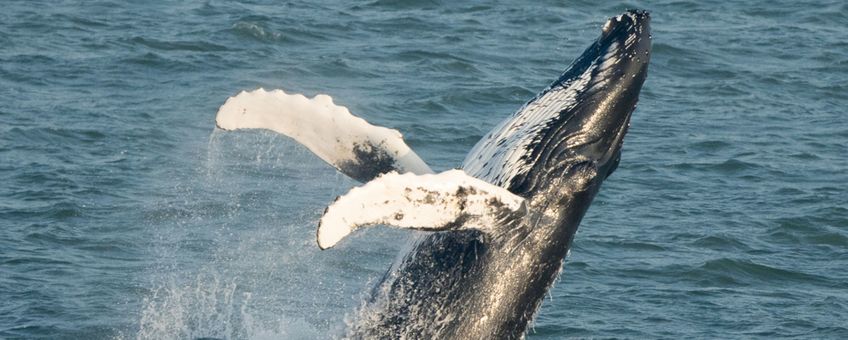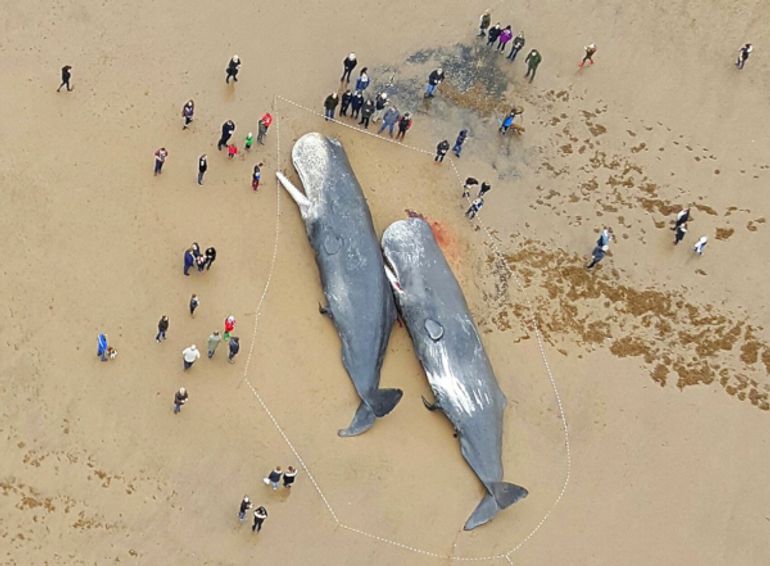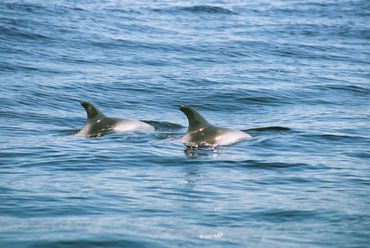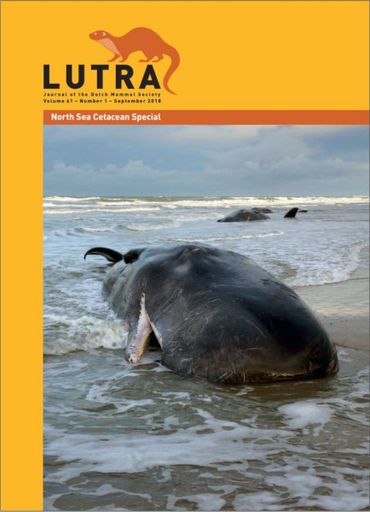
Humpback whale, sperm whale and porpoise on the rise in the North Sea
Dutch Mammal SocietyThe latest scientific findings on North Sea cetaceans have been brought together in a special issue of Lutra, the scientific journal of the Dutch Mammal Society. This 216-page issue includes contributions by authors from countries bordering the North Sea, the United Kingdom, the Netherlands, Belgium, Denmark and Germany, and is a commemorative volume in memory of the work of Dutch cetologist Chris Smeenk, who passed away in March 2017.
Strandings
After an overview of North Sea cetacean research since the 1960s by guest editor Peter Evans, one of the first contributions is a review of sperm whale strandings around the North Sea. The detailed stranding list, which dates back to the 13th century, was largely compiled by Chris Smeenk and completed and edited by Peter Evans after Chris Smeenk’s death.
The issue further includes recent overviews of all thirteen cetaceans stranded in Belgium and Denmark. By far the most numerous recorded species is the harbour porpoise, followed by the white-beaked dolphin. In addition to these two species, pygmy whale is nowadays considered indigenous in the North Sea, albeit only in its central and northern parts.

Increasing humpbacks
Remarkably, from the 1990s onwards, the number of stranded humpback whales started to rise in the southern North Sea. From 2001 on, this was followed by increasing numbers of live sightings. Today, humpback whales visit the region every year in small numbers and these involve both adults and juveniles. Some of these animals have been seen in different years and some remained up to several months in the area. Apparently, these animals can find sufficient food in the southern North Sea once they have arrived.
The success story of a small dolphin
Apart from being the most abundant, the harbour porpoise is also the most well studied cetacean in the North Sea. Aerial surveys, carried out in 2012-2017, over the Dutch Continental Shelf, show that a large proportion of the North Sea population remains in Dutch waters and that the species reproduces here as well. Harbour porpoise is also present year-round in the Ems estuary, at the Dutch-German border. A study of their feeding behaviour indicates that they follow their preferred prey, and that this might be the reason for porpoises to move far into the estuary at specific times.
Fewer white-beaked dolphins
However, there are concerns as well. Given the outcome of a spatiotemporal analysis of stranding numbers since 1991 in the North Sea, we may have to face a decrease or even the disappearance of white-beaked dolphin from the southern North Sea in the future, in favour of more northern regions. Climate change, i.e. the rise of water temperature, is held reponsible for this.
Causes of these changes
In general, many theories are discussed as possible factors resulting in the spatiotemporal changes in the distribution and numbers of cetaceans in the North Sea. Factors related to climate change are often put forward as important. An analysis of the possible roles of environmental factors, which might influence the entry of migrating sperm whales into the North Sea and/or their stranding indicated a relation with several sea and land surface temperature indices.
However, given the absence of an obvious mechanism by which temperature affects the sperm whale strandings, it is important to recognise that (a combination of) several different processes may affect the occurrence of strandings, including the recovery of the sperm whale population following the cessation of commercial whaling in the late 20th century and the distributional shifts of prey populations. For the humpback whales it is even suggested that something has changed in the whales themselves, causing them to be more inquisitive and to explore new waters.
A taxonomic puzzle
Scientific nomenclature can be complex, as illustrated for two cetacean species. Previous work leads Kinze to propose the name Tursio tursops for the bottlenose dolphin, instead of its current name Tursio truncatus. And Smeenk disentangles the nomenclatural history of Delphinus rostratus (Shaw, 1801) and Delphinus bredanensis (Lesson, 1828), the current name of the rough-toothed dolphin.
Interested?
Lutra is the scientific journal of the Dutch Mammal Society. Articles are published in English. Become a Lutra subscriber and receive two issues a year. Membership fee of Lutra is 15 euros for members of the Dutch Mammal Society. Non-members pay 25 Euros a year. 28.50 Euros for non-Euro countries.
Text: Ben Verboom, Dutch Mammal Society
Photos: Hans Verdaat (lead photo: humpback whale in the North Sea near Castricum); Lee Swift; Richard Witte; Steve Geelhoed


